[Esp]Torso activo./[Eng]Active torso.
El tronco o torso, lo conforma la columna vertebral y el tórax o caja ósea flexible, donde se encuentran los pulmones y el corazón. En el tronco, también se alojan los órganos del aparato cardio-pulmonar y los órganos responsables de la digestión como el estómago e intestinos, igualmente están, el hígado y el páncreas, asimismo tenemos el aparato urinario, riñones y la vejiga, también los órganos reproductores tanto masculino y femenino. Motivado a su gran importancia, debemos mantener activado y fortalecido el tronco, para ello se recomienda realizar la postura, Prasarita Padottanasana o flexión del torso hacia delante y su variante Parivrtta Prasarita Padottanasana o flexión y giro del torso. En ese orden de ideas, es oportuno destacar que la fuerza del tronco desempeña un papel preferente en la vida diaria, sosteniendo todo el cuerpo, por ello es muy beneficioso revitalizar en forma consecuente el torso, el cual permite que el cuerpo funcione correctamente, mejorando el equilibrio y la estabilidad.
Cuando entrenamos el tronco, también se favorecen los músculos del abdomen, la pelvis, las caderas y la espalda baja, las cuales al trabajar en conjunto, hacen que las acciones diarias, se desarrollen con efectividad. Revitalizar el tronco con ejercicios y el yoga, posibilita contar con músculos centrales fuertes, en especial de la columna vertebral y el abdomen, promoviendo una buena postura, en caso contrario, se pueden producir, dolores de espalda y otros malestares corporales incómodos. Una espalda fuerte con un buen acondicionamiento puede soportar más presión y proteger la columna vertebral de una mejor manera, que una espalda que no ha sido ejercitada, en tal sentido, cuando se ejecutan flexiones hacia delante, lo cual se propone en la presente publicación, la columna también se beneficia al movilizar cada una de sus vértebras, favoreciendo la hidratación y oxigenación de los discos intervertebrales, se masajea el abdomen y mejora la digestión.
En lo emocional desarrollar, posturas que activen y fortalezcan el tronco, calman la ansiedad, el stress o la tensión. En atención a las ideas expresadas, se reitera la necesidad del desarrollo de
Prasarita Padottanasana o flexión del torso hacia delante y su variante Parivrtta Prasarita Padottanasana flexión y giro del torso hacia la pierna doblada, con la rodilla apoyada en la esterilla, un brazo estirado con la mano en la cintura, la cabeza hacia abajo y el otro brazo con el codo y la mano colocados lateralmente en el suelo, dichas asanas, además de fortalecer los músculos y articulaciones de la columna vertebral y del abdomen, liberan las tensiones en ellos y mejoran la postura, aportan flexibilidad a las piernas y las caderas, aumentan el riego sanguíneo, en especial al cerebro, estimulan el hígado y los riñones, mejoran la digestión, calman la mente y minimizan el estrés. Estimados, motivado a lo valiosa que son dichas posturas, para la salud física y mental, deseo contar con su compañía. Éxitos.

The trunk or torso is made up of the spinal column and the thorax or flexible bony box, where the lungs and heart are located. In the trunk, the organs of the cardio-pulmonary system and the organs responsible for digestion such as the stomach and intestines are also housed, as well as the liver and pancreas, we also have the urinary system, kidneys and bladder, also the organs both male and female breeders. Motivated by its great importance, we must keep the trunk activated and strengthened, for this it is recommended to perform the posture, Prasarita Padottanasana or flexion of the torso forward and its variant Parivrtta Prasarita Padottanasana or flexion and rotation of the torso. In that order of ideas, it is opportune to emphasize that the strength of the trunk plays a preferential role in daily life, supporting the whole body, for this reason it is very beneficial to consistently revitalize the torso, which allows the body to function correctly, improving balance and stability
When we train the trunk, the muscles of the abdomen, pelvis, hips and lower back are also favored, which when working together, make daily actions develop effectively. Revitalizing the trunk with exercises and yoga makes it possible to have strong core muscles, especially in the spine and abdomen, promoting good posture, otherwise back pain and other uncomfortable bodily ailments can occur. A strong back with good conditioning can withstand more pressure and protect the spine in a better way than a back that has not been exercised, in this sense, when performing forward bends, which is proposed in this publication. the spine also benefits by mobilizing each of its vertebrae, favoring the hydration and oxygenation of the intervertebral discs, the abdomen is massaged and digestion is improved.
In the emotional development, postures that activate and strengthen the trunk, calm anxiety, stress or tension. In response to the ideas expressed, the need for the development of Prasarita Padottanasana or forward flexion of the torso and its variant Parivrtta Prasarita Padottanasana flexion and rotation of the torso towards the bent leg, with the knee resting on the mat, one arm stretched out with the hand on the waist, the head down and the other arm with the elbow and hand placed laterally on the floor, these asanas, in addition to strengthening the muscles and joints of the spine and abdomen, release tension in them and improve posture, provide flexibility to the legs and hips, increase blood supply, especially to the brain, stimulate the liver and kidneys, improve digestion, calm the mind and minimize stress. Dear, motivated by how valuable these postures are, for physical and mental health, I wish to have your company. Successes.
Cumplimiento del proceso de Meditación
Es muy importante meditar, antes de calentar el cuerpo, con el propósito de relajarnos y calmar la mente, lo haremos con el apoyo de las siguientes posturas; sentados con el torso semi-flexionado hacia delante, las piernas con las rodillas dobladas, juntando las plantas de los pies delante del cuerpo, teniendo los brazos a los lados del cuerpo, los estiramos al frente para apoyar las manos en la esterilla, entre los pies y la ingles, con la finalidad de reflexionar e interanalizar las ideas que a continuación se mencionan:
1.-"Todo en la vida debe tener un equilibrio, debemos ser amables, pero no dejar que nadie abuse de nosotros. Confiemos, pero no dejemos, que nos engañen. Seamos felices y agradecidos, pero nunca dejemos de mejorar".
2.-"Reconocer es una palabra tan importante y poderosa, que se escribe igual al derecho que al revés".
3.-"La edad nunca puede ser barrera, para alcanzar el éxito. La edad es una limitación que colocamos en la mente, para no avanzar".
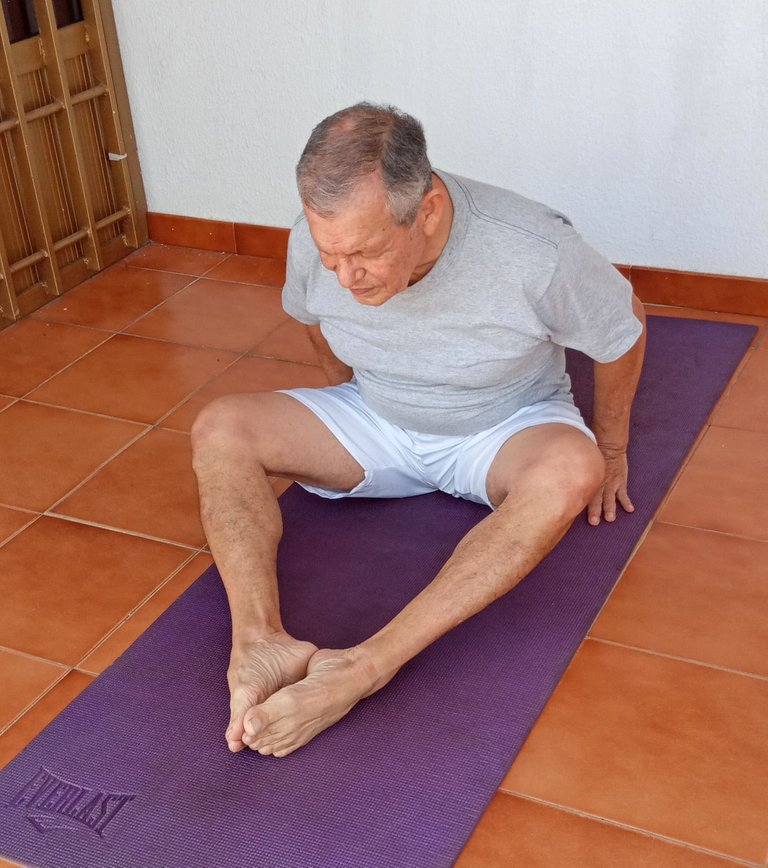
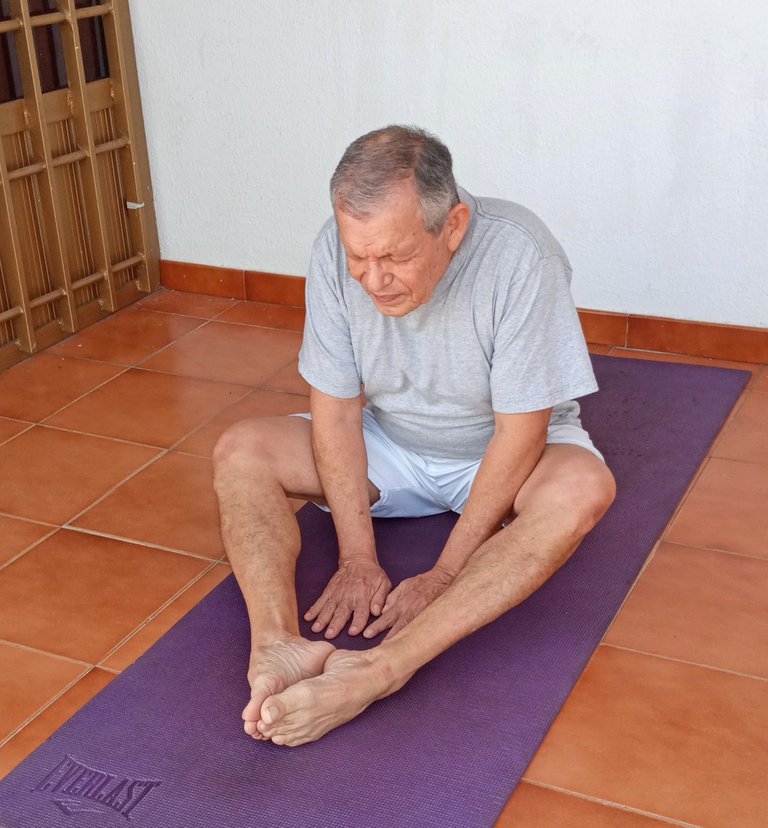
Completion of the meditation process
It is very important to meditate, before warming up the body, in order to relax and calm the mind, we will do it with the support of the following postures; seated with the torso semi-flexed forward, the legs with the knees bent, bringing the soles of the feet together in front of the body, having the arms at the sides of the body, we stretch them out in front to rest the hands on the mat, between the feet and groin, with the purpose of reflecting and interanalyzing the ideas that are mentioned below:
1.-"Everything in life must have a balance, we must be kind, but not let anyone abuse us. Let's trust, but let's not let them deceive us. Let's be happy and grateful, but never stop improving".
2.-"Recognize is such an important and powerful word, that it is written the same way forward as backwards".
3.-"Age can never be a barrier, to achieve success. Age is a limitation that we place in the mind, so as not to advance".
Ejercicios para calentar el cuerpo, previamente a las prácticas de yoga
Para obtener un buen rendimiento, evitar lesiones, flexibilizar los músculos y articulaciones, calentaremos el cuerpo, durante 12 minutos, descansando 10 segundos por cada dos minutos de ellos, aplicando ejercicios, muy efectivos para equilibrarnos e iniciar el fortalecimiento de los músculos de la espalda, del abdomen, los brazos y las piernas, dichas acciones, son las siguientes:
Iniciaremos arrodillados con la espalda derecha, apoyando la punta de los pies y las rodillas en la esterilla, doblando los codos y colocando las manos en la cintura, seguidamente muy suavemente, flexionamos el torso hacia atrás, luego regresamos a la posición inicial, para desarrollar el giro del tronco, hacia la derecha y luego a la izquierda.
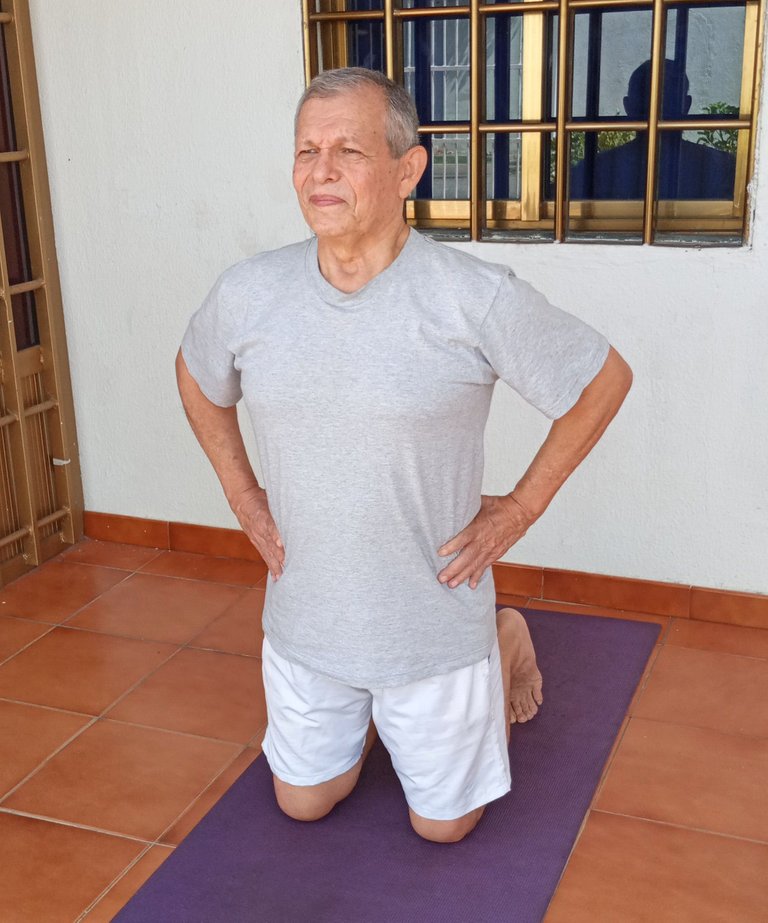


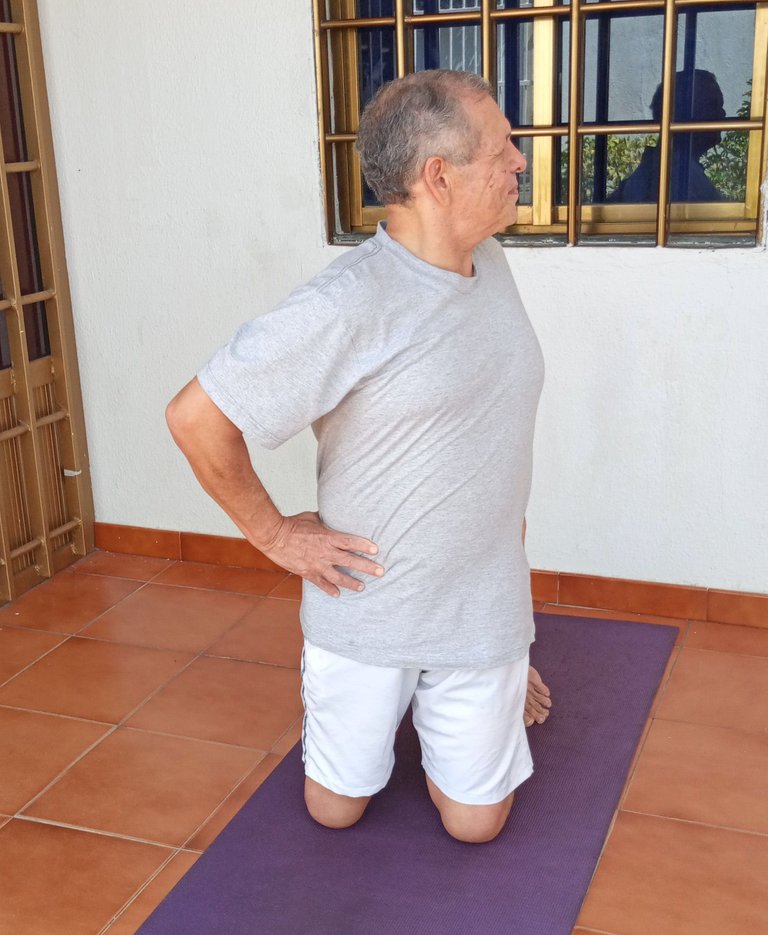
Exercises to warm up the body, prior to yoga practices
To obtain a good performance, avoid injuries, make the muscles and joints more flexible, we will warm up the body, for 12 minutes, resting 10 seconds for every two minutes of them, applying exercises, very effective to balance ourselves and start strengthening the muscles of the back, of the abdomen, arms and legs, these actions are the following:
We will start kneeling with our back straight, resting the tip of our feet and knees on the mat, bending our elbows and placing our hands on our waist, then very gently, we flex our torso backwards, then we return to the initial position, to develop the twist of the trunk, to the right and then to the left.
Al regresar a la posición inicial, es decir, arrodillados con la espalda derecha, apoyando la punta de los pies y las rodillas en la esterilla, en esta ocasión, estiramos los brazos al frente del torso, seguidamente conjuntamente con ellos, suavemente flexionamos el tronco hacia atrás, luego regresamos extendiendo los brazos al frente del cuerpo, para desarrollar el giro del torso con los brazos extendidos, a la derecha y posteriormente a la izquierda. Éxitos.

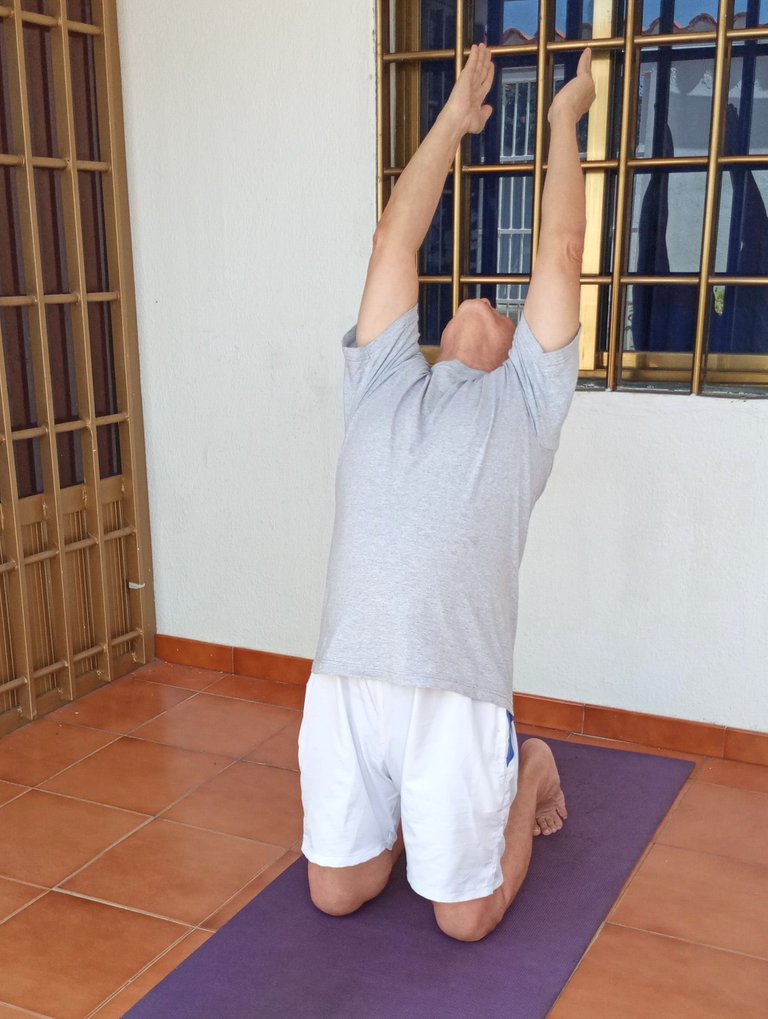
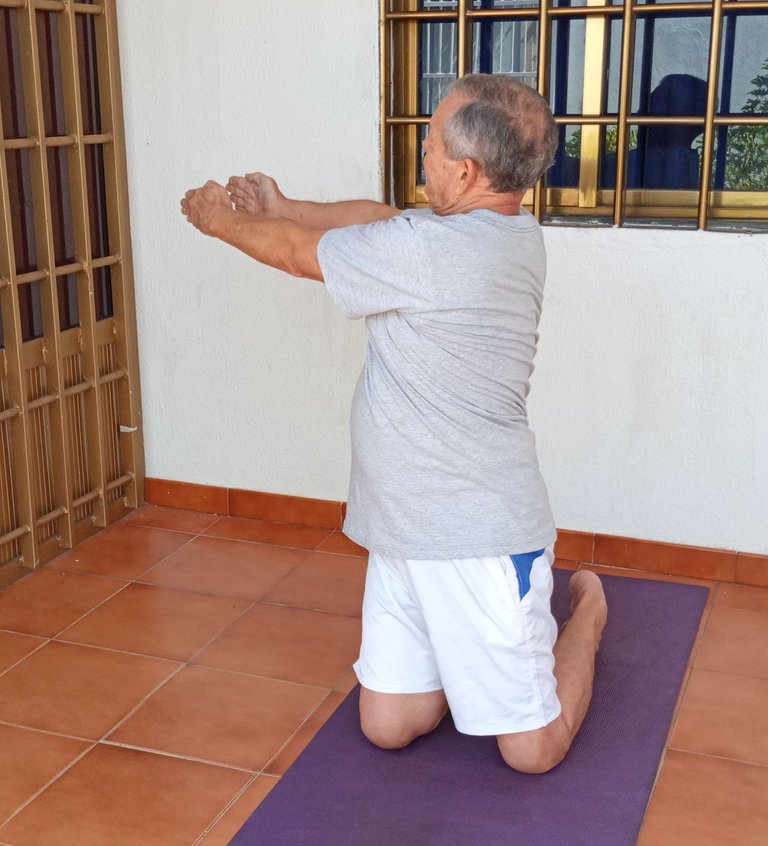

Returning to the initial position, that is, kneeling with the back straight, resting the tip of the feet and the knees on the mat, on this occasion, we stretch the arms in front of the torso, then together with them, gently flex the trunk backwards, then we return extending the arms in front of the body, to develop the twist of the torso with the arms extended, to the right and later to the left. Successes.
Desarrollo de Prasarita Padottanasana o flexión del torso hacia delante y su variante Parivrtta Prasarita Padottanasana o flexión y giro del torso hacia la pierna doblada, con la rodilla apoyada en la esterilla, un brazo estirado con la mano en la cintura, la cabeza hacia abajo y el otro brazo con el codo y la mano colocados lateralmente en el suelo
Ubicados en la postura Tadasana o de la montaña; parados con el torso derecho, los brazos y manos a los lados del cuerpo y las piernas juntas, seguidamente manteniendo el cuerpo recto, continuando con los brazos y las manos a los lados, separamos las piernas, quedándonos equilibrados inspirando, aguantando y expulsando aire. Éxitos.
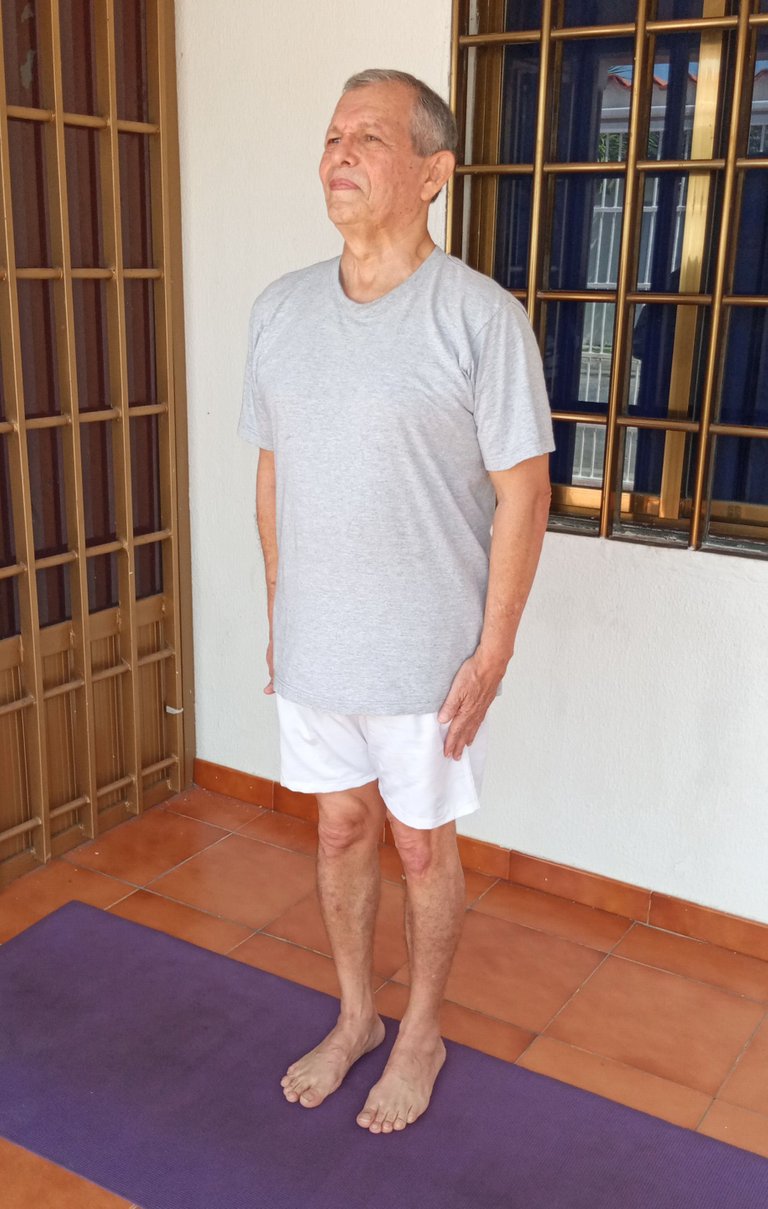

Development of Prasarita Padottanasana or forward flexion of the torso and its variant Parivrtta Prasarita Padottanasana or flexion and rotation of the torso towards the bent leg, with the knee resting on the mat, one arm stretched out with the hand on the waist, the head facing down and the other arm with the elbow and hand placed laterally on the floor
Located in the Tadasana or mountain posture; standing with the torso straight, the arms and hands at the sides of the body and the legs together, then keeping the body straight, continuing with the arms and hands at the sides, we separate the legs, staying balanced by inhaling, holding and expelling air. Successes.
Ubicados en la postura anterior, parados con las piernas separadas, conformamos la postura Prasarita Padottanasana, flexionando el torso hacia abajo con la mirada lateral, extendiendo el brazo derecho para apoyar la mano del citado lado en el suelo, mientras estiramos el brazo izquierdo hacia arriba, manteniéndonos equilibrados y en resistencia corporal, inspirando, aguantando y expulsando aire. Éxitos.

Located in the previous posture, standing with the legs apart, we form the Prasarita Padottanasana posture, flexing the torso downwards with a lateral gaze, extending the right arm to support the hand of the aforementioned side on the ground, while stretching the left arm upwards , keeping us balanced and in body resistance, inhaling, holding and expelling air. Successes.
Estando en la postura anterior, manteniendo el brazo derecho estirado, con la mano derecha apoyada en la esterilla, llevamos la mirada hacia abajo, colocando la mano izquierda en la cintura, luego vamos extendiendo la pierna derecha lateralmente, mientras doblamos la rodilla de la pierna izquierda ubicándola en la esterilla, conjuntamente con la punta de la planta del pie izquierdo, equilibrados y en resistencia corporal, inspiramos, aguantamos y expulsamos aire. Éxitos.

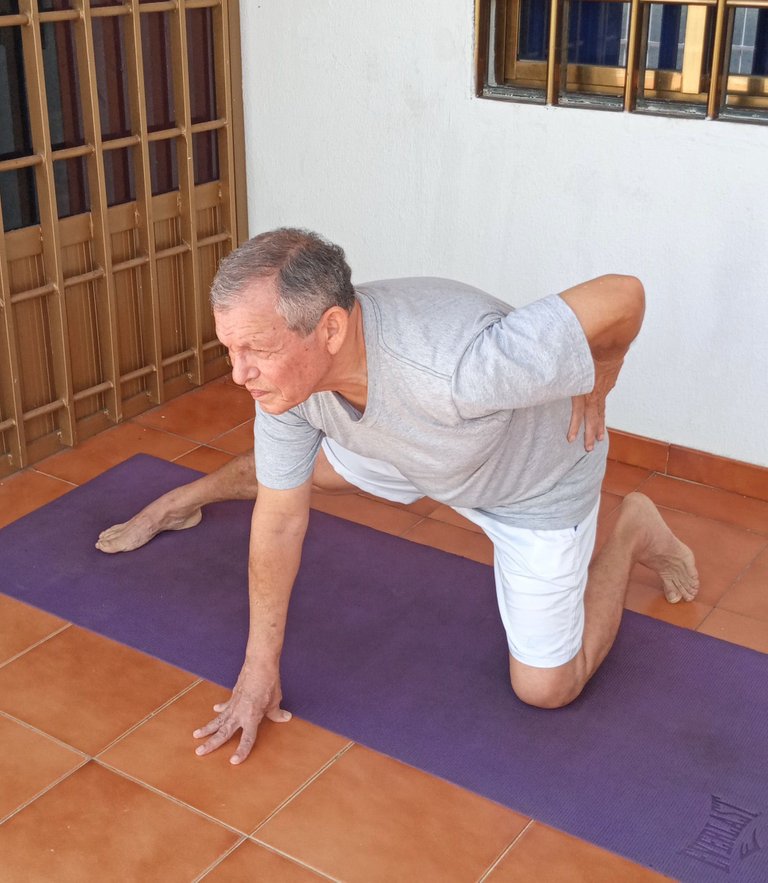
Being in the previous position, keeping the right arm stretched out, with the right hand resting on the mat, we look down, placing the left hand on the waist, then we extend the right leg laterally, while bending the knee of the right leg. placing it on the mat, together with the tip of the sole of the left foot, balanced and in body resistance, we inspire, hold and expel air. Successes.
Conformamos la variante Parivrtta Prasarita Padottanasana, de la siguiente manera; ubicados en la postura anterior, es decir con la mano izquierda en la cintura, el brazo derecho estirado hacia abajo, apoyando la mano de dicho lado en la esterilla, con la pierna derecha lateralmente extendida, mientras la rodilla de la pierna izquierda está doblada, suavemente bajamos un poco más el tronco, colocando el antebrazo derecho y la palma de la mano del citado lado en la esterilla, logrando girar el torso, al punto de acercar la cara hacia abajo, quedando la cabeza entre la rodilla izquierda y el antebrazo derecho, durando en la asana 30 segundos, equilibrados y en resistencia corporal, inspirando, aguantando y expulsando aire. Éxitos.
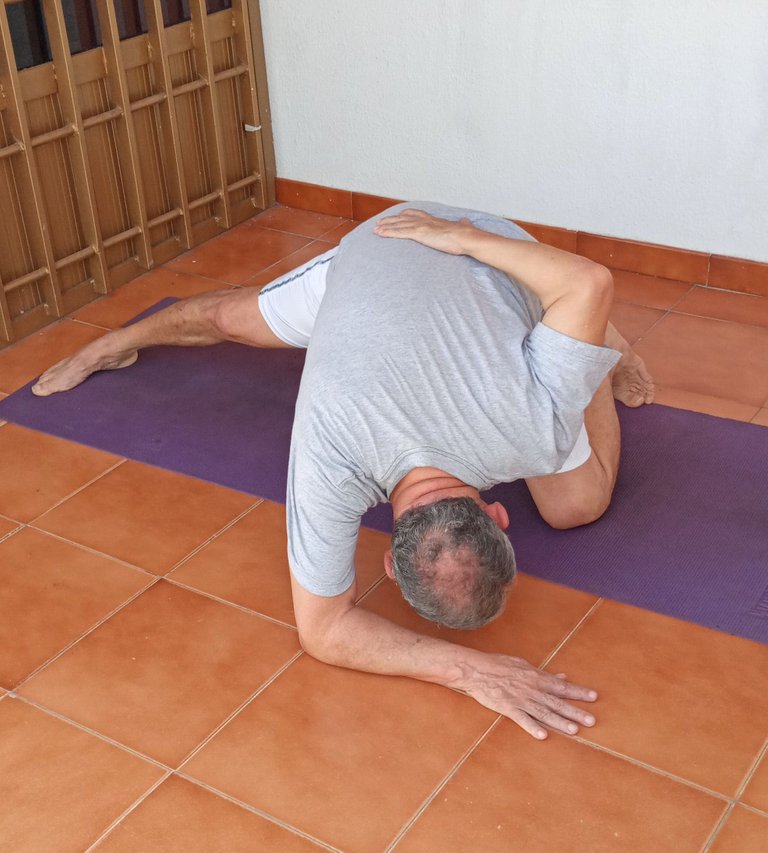
We make up the Parivrtta Prasarita Padottanasana variant, as follows; located in the previous position, that is, with the left hand on the waist, the right arm stretched downwards, resting the hand on that side on the mat, with the right leg laterally extended, while the knee of the left leg is bent, gently lower the trunk a little more, placing the right forearm and the palm of the hand on the aforementioned side on the mat, turning the torso, to the point of bringing the face down, leaving the head between the left knee and the right forearm , lasting 30 seconds in the asana, balanced and in body resistance, inhaling, holding and expelling air. Successes.
Repetimos la variante Parivrtta Prasarita Padottanasana, de la siguiente manera; ubicados en esta ocasión, con la mano derecha en la cintura, el brazo izquierdo estirado hacia abajo, apoyando la mano de dicho lado en la esterilla, con la pierna izquierda lateralmente extendida, mientras la rodilla de la pierna derecha está doblada, suavemente bajamos un poco más el tronco, colocando el antebrazo izquierdo y la palma de la mano del citado lado en la esterilla, logrando girar el torso, al punto de acercar la cara hacia abajo, quedando la cabeza entre la rodilla derecha y el antebrazo izquierdo, durando en la asana 30 segundos, equilibrados y en resistencia corporal, inspirando, aguantando y expulsando aire. Éxitos.
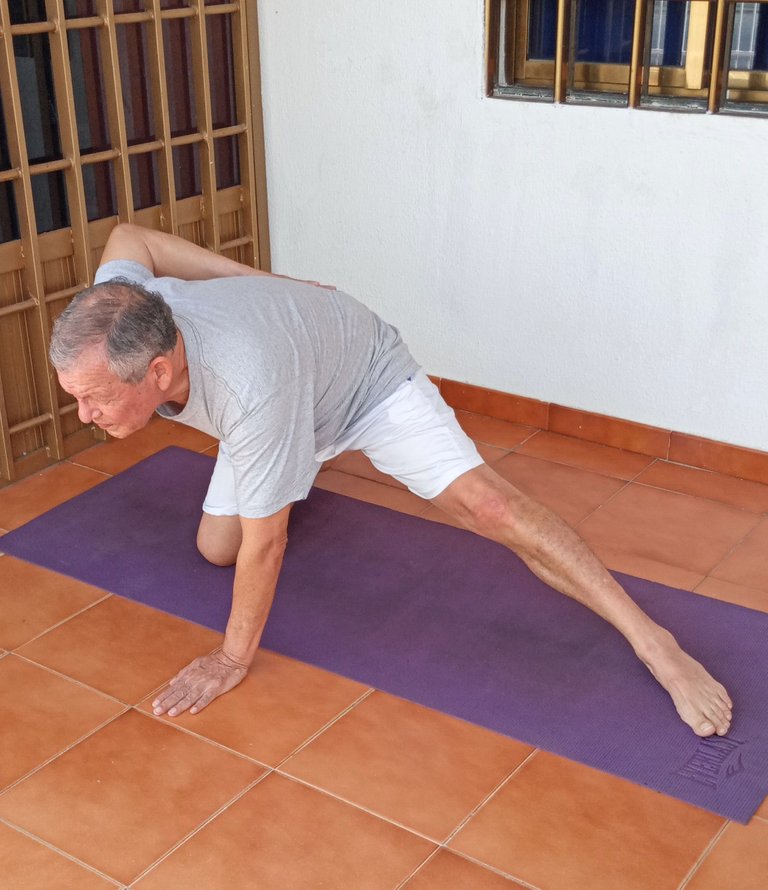

We repeat the Parivrtta Prasarita Padottanasana variant, as follows; located on this occasion, with the right hand on the waist, the left arm stretched downwards, resting the hand on that side on the mat, with the left leg laterally extended, while the knee of the right leg is bent, gently lower a the trunk a little more, placing the left forearm and the palm of the hand on the mentioned side on the mat, managing to turn the torso, to the point of bringing the face down, leaving the head between the right knee and the left forearm, lasting in the asana 30 seconds, balanced and in body resistance, inhaling, holding and expelling air. Successes.
Beneficios de Prasarita Padottanasana o flexión del torso hacia delante y su variante Parivrtta Prasarita Padottanasana flexión y giro del torso hacia la pierna doblada, con la rodilla apoyada en la esterilla, un brazo estirado con la mano en la cintura, la cabeza hacia abajo y el otro brazo con el codo y la mano colocados lateralmente en el suelo
- Fortalecen los músculos y articulaciones de la columna vertebral y del abdomen, liberando las tensiones en ellos.
- Mejoran la postura.
- Aportan flexibilidad a las piernas y las caderas.
- Contribuyen a aumentar el riego sanguíneo, en especial al cerebro.
- Ayudan a estimular el hígado y los riñones,.
- Mejoran la digestión.
- Calman la mente y minimizan el estrés.
Benefits of Prasarita Padottanasana or forward bending of the torso and its variant Parivrtta Prasarita Padottanasana bending and twisting of the torso towards the bent leg, with the knee resting on the mat, one arm stretched out with the hand on the waist, head down and the other arm with the elbow and hand placed laterally on the floor
- Strengthen the muscles and joints of the spine and abdomen, releasing tension in them.
- Improve posture.
- Provide flexibility to the legs and hips.
- Contribute to increase blood flow, especially to the brain.
- Help stimulate the liver and kidneys.
- Improve digestion.
- Calm the mind and minimize stress.
Prasarita Padottanasana o flexión del torso hacia delante y su variante Parivrtta Prasarita Padottanasana flexión y giro del torso hacia la pierna doblada, con la rodilla apoyada en la esterilla, un brazo estirado con la mano en la cintura, la cabeza hacia abajo y el otro brazo con el codo y la mano colocados lateralmente en el suelo, además de ser excelentes para fortalecer los músculos y articulaciones de la columna vertebral y del abdomen, liberando las tensiones en ellos, mejoran la postura, aportan flexibilidad a las piernas y las caderas, aumentan el riego sanguíneo, en especial al cerebro, estimulan el hígado y los riñones, mejoran la digestión, calman la mente y minimizan el estrés, beneficios que en su conjunto, permiten sanarnos física y mentalmente. Amigos, al agradecerles su receptividad y contínuas visitas, me suscribo a ustedes, con mucho afecto. Omar Gustavo Rojas Ortiz desde la ciudad de Cumaná en el estado Sucre-Venezuela.
Prasarita Padottanasana or forward flexion of the torso and its variant Parivrtta Prasarita Padottanasana flexion and rotation of the torso towards the bent leg, with the knee resting on the mat, one arm stretched out with the hand on the waist, the head down and the other arm with the elbow and hand placed laterally on the floor, as well as being excellent for strengthening the muscles and joints of the spine and abdomen, releasing tension in them, improving posture, providing flexibility to the legs and hips, increasing blood flow, especially to the brain, stimulate the liver and kidneys, improve digestion, calm the mind and minimize stress, benefits that together, allow us to heal physically and mentally. Friends, thanking you for your receptivity and continuous visits, I subscribe to you, with much affection. Omar Gustavo Rojas Ortiz from the city of Cumaná in the state of Sucre-Venezuela.
Las imágenes fueron tomadas por Nancy de Rojas con mi celular Samsung Galaxy A10s y la publicación es de mi autoría.
The images were taken by Nancy de Rojas with my Samsung Galaxy A10s cell phone and the publication is my own.
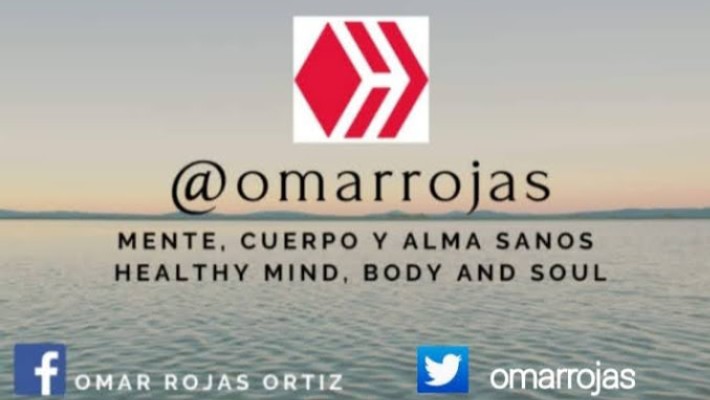
https://twitter.com/Omarroj52318483/status/1560665423384743936
The rewards earned on this comment will go directly to the people sharing the post on Twitter as long as they are registered with @poshtoken. Sign up at https://hiveposh.com.
wow, estos ejercicios me parecen muy buenos para compartirlo, bastante explicito cada ejercicio. Pondré a prueba para mostrarlo a una amiga que se que le gustarán. Saludos sr @omarrojas 😄
Gracias estimado amigo @yeral-diaz por su positiva motivación. Éxitos
Congratulations @omarrojas! You have completed the following achievement on the Hive blockchain and have been rewarded with new badge(s):
Your next target is to reach 3000 comments.
You can view your badges on your board and compare yourself to others in the Ranking
If you no longer want to receive notifications, reply to this comment with the word
STOPTo support your work, I also upvoted your post!
Check out the last post from @hivebuzz:
Support the HiveBuzz project. Vote for our proposal!